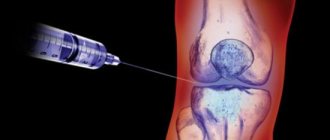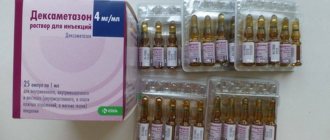Nosological classification (ICD-10)
- C34 Malignant neoplasm of bronchus and lung
- C40-C41 Malignant neoplasms of bones and articular cartilage
- C49 Malignant neoplasm of other types of connective and soft tissues
- C50 Malignant neoplasms of the breast
- C56 Malignant neoplasm of the ovary
- C58 Malignant neoplasm of the placenta
- C62 Testicular malignancy
- C69.2 Malignant neoplasm of the retina
- C81 Hodgkin's disease [lymphogranulomatosis]
- C91.0 Acute lymphoblastic leukemia
- L40 Psoriasis
- O01 Hydatidiform skid
Methotrexate
Methotrexate is the international name of the drug.
Available in the form of tablets containing 2.5; 5 and 10 mg of methotrexate, solutions for injections of 10 mg in 1 ml, concentrate for the preparation of a solution for infusion of 100 mg in 1 ml.
What is methotrexate and how does it work?
Methotrexate belongs to the group of antimetabolites - analogues of folic acid. Inhibits folic acid metabolism and DNA synthesis. It is a cytostatic and antitumor agent. In doses used in rheumatology, it has an immunosuppressive and antiproliferative (slows down cell division) effect.
What is methotrexate used for?
Methotrexate is indicated for rheumatoid arthritis, juvenile rheumatoid arthritis, ankylosing spondylitis, psoriasis, psoriatic arthritis, dermatomyositis, systemic lupus erythematosus. Methotrexate is prescribed to suppress the inflammatory and immunological activity of the disease, to prevent the progression of the disease and the development of complications.
What should you tell your doctor before starting treatment with methotrexate?
- about the presence of chronic liver or kidney disease
- about reactions to medications
- about taking any other medications, including over-the-counter medications, vitamins
- about the presence of a chronic infectious process (herpes, tuberculosis, fungal infection, syphilis, etc.)
- about pregnancy and breastfeeding
What are the rules for taking methotrexate?
- Take the medication as prescribed by your doctor. The drug is prescribed, as a rule, once a week in the form of tablets or intramuscular injections. In a hospital setting, it is possible to administer high doses of the drug intravenously.
- Taking methotrexate requires constant monitoring of clinical and laboratory parameters (number of leukocytes, erythrocytes, platelets, concentration of urea, creatinine, bilirubin, level of liver enzymes) - once every 2 weeks.
- Methotrexate in tablet form is taken before meals, without chewing, with water.
- Never take more methotrexate than prescribed by your doctor. If you take an excessive dose, consult your doctor immediately.
- During treatment, carry the medication package with you and maintain a constant supply of the drug.
What to do if you miss a dose of methotrexate?
- Take the missed dose of medication as soon as you remember.
- If you miss a dose and it is already time for your next dose, continue taking pre-methotrexate on your previous schedule.
- Do not take a double or extra dose of the drug.
What is needed for treatment to be effective and safe?
- Visit your doctor regularly to evaluate the effectiveness of your methotrexate treatment.
- Taking methotrexate should be combined with taking folic acid to reduce the risk of side effects.
- Regularly monitor general and biochemical blood tests
- If you need to take methotrexate along with other drugs, be sure to discuss this with your doctor.
What problems can taking methotrexate cause?
Treatment with methotrexate often causes side effects:
- Changes in general and biochemical blood tests
- Dyspeptic symptoms: nausea, vomiting, abdominal pain
- Allergic reactions
- Reduced resistance to infectious diseases (visiting public places should be limited during epidemics of acute respiratory viral infections)
- The development of side effects depends on the dose of the drug and individual sensitivity to the drug.
If new symptoms appear during treatment with methotrexate, you should consult your doctor.
How to properly store methotrexate?
The drug should be stored in a place protected from light at a temperature not exceeding 25 degrees, out of the reach of children. Shelf life: 3 years. Never use the drug after the expiration date.
Directions for use and doses
Inside, before meals, without chewing, with water; IM, IV (bolus, infusion), IV, intrathecal (subarachnoid). Doses are selected individually, depending on the disease, general condition and blood picture of the patient. Doses above 100 mg/m2 of body surface are administered only intravenously (the solution or concentrate is pre-diluted with a 5% glucose solution to a level of 10 mg (500-1000 ml) and under the protection of calcium folinate. Intrathecal - 0.2-0.5 mg /kg (8-12 mg/m2) every 2-3 days; after the disappearance (or reduction) of symptoms, the interval between injections increases to 1 week, then to 1 month; prophylactically - every 6-8 weeks. For psoriasis, psoriatic arthritis , autoimmune diseases - 10-25 mg orally, weekly (it is also possible to administer intravenously or intramuscularly at the same dose); initial dose - 2.5-5 mg, then the dose is increased to 7.5-25 mg/week (no more than 30 mg/week).
Arthritis
Rheumatoid arthritis
Rheumatoid arthritis (RA) is an autoimmune rheumatic disease of unknown etiology, characterized by chronic erosive arthritis (synovitis) and systemic inflammatory damage to internal organs.
Prevention.
The etiology of RA is unknown, so primary prevention is not carried out.
Screening.
Screening is not carried out. Immunological disorders (increased titers of RF, ACCP and CRP) are detected several months or years before the development of clinical symptoms of RA.
general characteristics
Characterized by a variety of options for the onset of the disease. In most cases, the disease begins with polyarthritis; less often, manifestations of arthritis can be moderately expressed, and arthralgia, morning stiffness in the joints, deterioration in general condition, weakness, weight loss, low-grade body temperature, and lymphadenopathy predominate, which may precede clinically significant joint damage.
The development of arthritis may be preceded by a prodromal period of several weeks or months, manifested by fatigue, weight loss, periodic pain in the joints (often against the background of changes in atmospheric pressure), decreased appetite, increased sweating, low-grade body temperature, moderate anemia, and an increase in ESR.
In many patients, the disease begins with nonspecific joint damage, and it is defined as undifferentiated arthritis (UA). Among patients with AN, 30-50% develop significant RA during the first year of observation. In 40-55% there is spontaneous remission; in the rest, AN remains or another disease is detected.
What happens in joints with arthritis?
Overstimulation and dysregulation of the immune system leads to overproduction of T cells
T cells enter the joint synovium through the blood vessels and release pro-inflammatory cytokines >triggers a cascade of reactions in the joints> leads to the development of inflammation
The synovial membrane begins to proliferate and this leads to excess production of new fluid. This leads to swelling and swelling of the joint.
The cartilage becomes thinner and this leads to decreased joint protection
Pannus (granulation tissue) is formed from the synovial membrane
Bone breakdown (erosion) in areas where the synovial membrane touches the bone (this can be detected by radiographic examination)
In the later stages of the disease, joint cavities can be completely filled with granulation tissue
Scheme of changes in joints
Treatment
Goals of therapy.
The main goal of therapy is to achieve stable remission of the disease. The remaining tasks are:
- Suppresses inflammation-related arthritis symptoms and extra-articular manifestations.
- Prevention of destruction, dysfunction and deformation of joints.
- Improving quality of life.
- Reducing the risks of comorbid diseases.
Patients with RA should be treated by a rheumatologist for the following reasons:
- The functional state of those under the supervision of rheumatologists is better than that of those supervised by a general practitioner.
- The use of modern methods of pharmacotherapy for RA requires special values
- It is necessary to inform patients about the nature of the disease and the side effects of the drugs used.
- They use an interdisciplinary approach based on the use of non-pharmacological and pharmacological methods, involving, if necessary, specialists from other medical specialties (orthopedist, physiotherapist, cardiologist, neurologist, psychologist and others)
Drug treatment.
The following groups of drugs are used to treat RA:
- Non-narcotic analgesic drugs-NSAIDs
- "simple" analgesics
- GK
- DMARDs and GIBPs
General provisions
- NSAIDs are prescribed to reduce joint pain
- NSAIDs have a good sympomatic (analgesic) effect
- NSAIDs do not affect the progression of joint destruction and disease prognosis
- Treatment of RA is based on the use of DMARDs and GEBDs
DMARD therapy should be started as early as possible (within 3-6 months from the onset of symptoms), even if patients do not formally meet diagnostic criteria for RA (undifferentiated arthritis)
Early initiation of treatment with DMARDs and biologically active drugs helps improve function and slow the progression of joint destruction. Late administration of DMARDs (3-6 months after the onset of the disease) is associated with a decrease in the effectiveness of DMARD monotherapy.
Nonsteroidal anti-inflammatory drugs
Depending on their selectivity for COX-2, NSAIDs are divided into two categories - non-selective (N-NSAIDs) and selective (C-NSAIDs). NSAIDs are more effective at suppressing pain and inflammation than paracetamol. For RA, NSAIDs are used in combination with DMARDs.
Glucorticoids:
GCs should be used not as monotherapy, but in combination with DMARDs.
GCs in low/moderate doses effectively control clinical manifestations and progression of joint destruction. GCs are more effective than NSAIDs, and the effectiveness/cost ratio of GCs is better than that of NSAIDs.
Basic anti-inflammatory drugs
DMARD therapy should be administered to all patients without exception. DMARD and GEBD therapy reduces pain and inflammation, improves function and slows the progression of joint destruction.
When choosing therapy with DMARDs and GEBD, it is necessary to take into account the duration of the disease (< 6 months - early stage; 6-24 months - intermediate stage; >24 months - advanced stage), the activity of inflammation, the presence of unfavorable prognosis factors, comorbidity. Risk factors for an unfavorable prognosis include high RF titers, an increase in the concentration of ACCP, an increase in ESR and CRP concentration, and the rapid development of destruction in the joints.
Dynamic monitoring of the effectiveness and side effects of DMARD treatment is carried out by a rheumatologist and (as an exception) a general practitioner, but with the advisory support of a rheumatologist. *
Methotrexate is the most effective DMARD, the main component of combination therapy with other DMARDs and biologically active drugs. Compared to other DMARDs, it has the best efficacy/toxicity ratio.
Monotherapy is indicated regardless of the duration of the disease, activity and the presence of unfavorable prognosis factors. In patients starting treatment with methotrexate for the first time. Monotherapy with MTX has a better efficacy/toxicity ratio than combination therapy with MTX and other DMARDs. If MTX monotherapy is ineffective, it is advisable to carry out combination therapy with MTX and DMARDs or MTX and a GEBD.
Genetically engineered biological products (GEBP)
This is a group of drugs characterized by a selective effect on certain mechanisms of the development of chronic inflammation and are monoclonal antibodies to immunocompetent cells or proinflammatory cytokines, hybrid protein molecules that inhibit the activity of cytokines and the interaction of immunocompetent cells. Currently, 4 classes of GIBP are registered.
— TNF-α inhibitors: infliximab, adalimumab, etanercept, certolizumab pegol, golimumab
— Anti-B-cell drugs: rituximab
— IL-6 receptor inhibitors: tocilizumab
— T-lymphocyte costimulation blockers: abatacept
*Clinical guidelines. Rheumatology, 2nd edition, revised and expanded. Ed. acad. RAMS E.L. Nasonova




